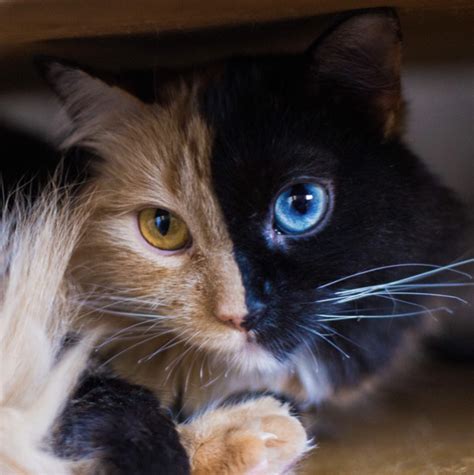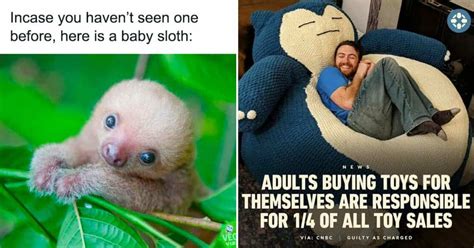
A cat sporting a striking two-toned face has captivated the internet, drawing comparisons to Dora the Explorer and sparking widespread online fascination. The feline’s unique coloration, bisected neatly down the middle with distinct black and orange hues, has made it a viral sensation, prompting a flurry of reactions and shares across social media platforms.
The cat, whose name and owner remain unknown, first gained traction when images and videos of it began circulating online, quickly amassing millions of views and sparking countless comments. The animal’s appearance, characterized by a stark division of color directly down its face, resembles a chimera, an animal with two sets of DNA, though the exact cause of the cat’s unusual coloring remains unconfirmed without genetic testing.
“It looks like two different cats were perfectly spliced together,” one user commented on a viral video, capturing the sentiment of many online viewers. The unusual appearance has not only drawn comparisons to cartoon characters like Dora the Explorer but has also sparked conversations about genetics, animal coloration, and the wonders of natural variation.
The viral sensation highlights the internet’s ability to amplify unique and unusual phenomena, turning ordinary animals into overnight celebrities. The cat’s distinctive appearance has resonated with a broad audience, demonstrating the power of visual content to capture attention and generate widespread interest.
The images and videos showcase the cat’s face, sharply divided into two distinct colors. One half is predominantly black, while the other is a vivid orange or ginger. The split is remarkably precise, running along the centerline of the face and creating a striking visual contrast. The cat’s eyes, each corresponding to the different colored fur, further enhance the unique appearance.
The online community’s reaction has been overwhelmingly positive, with users expressing amazement and affection for the feline. Many have speculated about the genetic mechanisms that might have led to such a distinctive coloration, while others have simply marveled at the cat’s beauty. The phenomenon underscores the internet’s capacity to celebrate and share the unique aspects of the natural world, fostering a sense of wonder and appreciation for animal diversity.
The phenomenon of chimerism or mosaicism is often discussed in relation to animals with unusual fur patterns. Chimerism occurs when an animal develops from two fertilized eggs that fuse together early in development, resulting in two distinct sets of DNA within a single organism. Mosaicism, on the other hand, arises from a genetic mutation during development, leading to different genetic makeups in different cells of the same organism. While the cat’s appearance suggests either of these conditions, a definitive diagnosis would require genetic testing. Without such testing, the precise cause remains speculative.
The internet’s fascination with this two-faced feline is not an isolated incident. Throughout the years, numerous animals with unusual appearances have gained viral fame, demonstrating the public’s interest in the unique and extraordinary. These animals often become symbols of individuality and the beauty of natural variation. Their stories serve as reminders of the diversity found in the animal kingdom and the power of the internet to connect people through shared fascination.
As the cat continues to capture the internet’s attention, its story underscores the role of social media in amplifying unique phenomena and fostering a sense of connection among people who appreciate the unusual and extraordinary. The cat’s viral fame also highlights the importance of genetic diversity and the natural variations that contribute to the richness of the animal kingdom. Its story serves as a reminder of the wonders of nature and the ability of animals to captivate and inspire.
The online frenzy surrounding the cat also reflects broader trends in internet culture, where animals often play a central role in generating engagement and fostering community. Cats, in particular, have long been a staple of internet content, with countless memes, videos, and images dedicated to their antics and unique characteristics. The two-faced feline’s story is a continuation of this trend, demonstrating the enduring appeal of cats as subjects of online fascination.
The scientific community has also taken note of the cat’s unusual appearance, with many geneticists and veterinarians weighing in on the possible causes of its distinct coloration. While definitive answers remain elusive without genetic testing, their insights have helped to educate the public about the complexities of animal genetics and the mechanisms that can lead to unique and striking variations in appearance. This intersection of popular interest and scientific inquiry highlights the potential for viral phenomena to promote scientific understanding and engagement.
In summary, the two-faced feline’s viral fame is a testament to the internet’s ability to amplify unique phenomena and foster a sense of connection among people who appreciate the unusual and extraordinary. The cat’s story underscores the importance of genetic diversity and the natural variations that contribute to the richness of the animal kingdom. It also highlights the enduring appeal of cats as subjects of online fascination and the potential for viral phenomena to promote scientific understanding and engagement. While the cat’s precise genetic makeup remains unknown, its story serves as a reminder of the wonders of nature and the ability of animals to captivate and inspire.
Extended Details and Context:
The internet’s fascination with animals displaying unusual genetic traits or physical characteristics is well-documented. From cats with heterochromia (different colored eyes) to dogs with dwarfism, animals that deviate from the norm often capture the public’s attention and become viral sensations. This phenomenon reflects a broader cultural appreciation for individuality and the celebration of differences. In the case of the two-faced feline, the striking visual contrast created by its split coloration has proven particularly compelling, drawing viewers in with its unique and almost surreal appearance.
The comparison to Dora the Explorer, while lighthearted, speaks to the visual impact of the cat’s coloration. Dora, the popular children’s cartoon character, is known for her distinctive appearance, including her two-toned hairstyle. The resemblance, however superficial, has resonated with viewers and contributed to the cat’s viral fame. The internet’s ability to quickly create and disseminate memes and comparisons further amplifies these connections, turning ordinary animals into cultural touchstones.
The scientific explanation for the cat’s appearance, while not definitively confirmed, likely involves chimerism or mosaicism. Chimerism, as mentioned earlier, occurs when two separate embryos fuse together early in development, resulting in an animal with two distinct sets of DNA. This can lead to a variety of unusual physical traits, including different colored eyes, patches of fur with different textures, and, in rare cases, a face that is split into two distinct colors.
Mosaicism, on the other hand, arises from a genetic mutation that occurs after fertilization. This mutation affects only certain cells in the developing embryo, leading to a patchwork of cells with different genetic makeups. Mosaicism can also result in unusual fur patterns and coloration. Determining which of these phenomena is responsible for the cat’s appearance would require genetic testing, which involves analyzing the cat’s DNA to identify the presence of multiple sets of genetic material or specific mutations.
While genetic testing would provide a definitive answer, it is not always feasible or necessary. In many cases, the visual appearance of the animal is enough to spark interest and generate discussion. The internet’s fascination with the two-faced feline is not necessarily driven by a desire for scientific certainty but rather by a sense of wonder and appreciation for the unusual.
The viral fame of animals like this cat can also have positive consequences. It can raise awareness about genetic diversity and the importance of conserving animal populations. It can also inspire people to learn more about genetics and biology. Furthermore, it can provide a platform for animal shelters and rescue organizations to promote adoption and responsible pet ownership.
In addition to the scientific and educational aspects, the viral fame of animals can also have a significant impact on their lives. These animals often become local celebrities, attracting visitors and media attention. This can lead to increased exposure for their owners and the communities in which they live. However, it is also important to ensure that these animals are treated with respect and that their well-being is prioritized.
The internet’s role in amplifying these stories cannot be overstated. Social media platforms like Twitter, Facebook, Instagram, and TikTok provide a global stage for sharing images and videos of unusual animals. The ease with which this content can be shared and consumed contributes to its viral potential. The algorithms that govern these platforms also play a role, often prioritizing content that is visually appealing, emotionally engaging, or unusual.
The comments and reactions that accompany these viral posts often reflect a wide range of perspectives. Some users express amazement and admiration, while others offer scientific explanations or humorous comparisons. These discussions can be a valuable source of information and entertainment, fostering a sense of community among people who share a common interest in the animal.
The two-faced feline’s story is also a reminder of the power of visual content in the digital age. Images and videos are often more effective at capturing attention and conveying information than text-based content. This is particularly true when it comes to animals, whose expressions and behaviors can be easily interpreted and understood by people from different cultures and backgrounds.
The ethical considerations surrounding the viral fame of animals are also worth noting. It is important to ensure that these animals are not exploited for commercial gain or subjected to undue stress. Their owners should be responsible and prioritize their well-being above all else. It is also important to be mindful of the potential for misinformation and to rely on credible sources of information when discussing the scientific aspects of their appearance.
In conclusion, the two-faced feline’s viral fame is a complex phenomenon that reflects a confluence of factors, including the internet’s ability to amplify unique phenomena, the public’s fascination with unusual animals, and the power of visual content in the digital age. While the cat’s precise genetic makeup remains unknown, its story serves as a reminder of the wonders of nature and the ability of animals to captivate and inspire. The ethical considerations surrounding its fame should also be carefully considered to ensure that its well-being is prioritized and that its story is used to promote education and responsible pet ownership. The event serves as a microcosm of the broader internet ecosystem, revealing the capacity for rapid dissemination of information, the formation of online communities around shared interests, and the potential for both positive and negative impacts on the subjects of viral attention. The cat, in essence, becomes a symbol, embodying the intersection of science, culture, and the digital age.
Furthermore, the longevity of the story on the internet is also noteworthy. While many viral trends fade quickly, the two-faced cat continues to resurface in various forms, whether through new articles, shared images, or discussions on online forums. This enduring appeal suggests that the cat’s story resonates with a deeper cultural interest in individuality, uniqueness, and the beauty of natural variation. It also highlights the power of compelling visual narratives to transcend geographical boundaries and language barriers, creating a global community of admirers.
The story also raises questions about the role of genetic anomalies in the broader context of evolution and biodiversity. While the two-faced cat’s appearance is undoubtedly unusual, it is also a reminder that genetic variation is a fundamental aspect of life on Earth. These variations can lead to new adaptations and innovations, contributing to the ongoing process of evolution. By celebrating these unique individuals, we also acknowledge the importance of preserving genetic diversity and protecting the natural world.
The phenomenon also sheds light on the psychological aspects of human perception. Our brains are wired to notice patterns and deviations from those patterns. The two-faced cat’s starkly divided coloration is a prime example of a deviation that captures our attention and challenges our expectations. This cognitive dissonance can lead to increased engagement and a desire to understand the underlying causes of the unusual phenomenon.
The story also underscores the importance of critical thinking in the digital age. While the internet can be a valuable source of information, it is also rife with misinformation and misleading content. When encountering viral stories like this one, it is essential to rely on credible sources of information and to be wary of unsubstantiated claims or sensationalized reporting. The scientific explanations for the cat’s appearance should be carefully evaluated, and it is important to avoid drawing conclusions without sufficient evidence.
Ultimately, the two-faced feline’s story is a complex and multifaceted phenomenon that reflects the intersection of science, culture, and the digital age. It is a story that has captured the attention of millions around the world and has sparked discussions about genetics, biodiversity, and the power of visual content. While the cat’s precise genetic makeup remains unknown, its story serves as a reminder of the wonders of nature and the ability of animals to captivate and inspire. The internet will likely continue to produce similar viral sensations, highlighting the endless capacity for the animal kingdom to surprise and enchant us.
The cat’s story has also indirectly highlighted the business of online content creation. The platforms that host and distribute such content benefit significantly from the increased traffic and engagement. This raises questions about the ethical responsibilities of these platforms in ensuring the accuracy and responsible presentation of such stories. The pressure to generate clicks and views can sometimes lead to sensationalized or misleading reporting, which can have negative consequences for the animals and people involved.
The viral success of the two-faced cat also underscores the evolving relationship between humans and animals in the 21st century. As more people live in urban environments and have less direct contact with nature, animals often become symbols of wildness and authenticity. The internet provides a virtual space for people to connect with these animals and to experience a sense of wonder and connection to the natural world. This trend is likely to continue as technology continues to advance and as people seek out new ways to connect with the natural world.
The ongoing fascination with this cat also prompts consideration of the future of genetic research and its potential impact on animal breeding. While intentional manipulation of genes to create unusual or striking appearances raises ethical concerns, the study of naturally occurring genetic variations can provide valuable insights into the mechanisms of evolution and the genetic basis of various traits. The two-faced cat serves as a reminder of the power of genetics to shape the diversity of life on Earth and the importance of understanding these processes.
The sheer volume of online discussion and commentary surrounding the cat illustrates the power of collective intelligence. While individual users may have limited knowledge or expertise, the collective knowledge of the online community can be surprisingly comprehensive. This collective intelligence can be used to identify credible sources of information, to debunk misinformation, and to generate new insights into the phenomenon at hand.
The cat’s story has also indirectly promoted animal welfare. Many of the articles and discussions about the cat have included links to animal shelters and rescue organizations, encouraging people to adopt animals in need. The viral attention has also helped to raise awareness about the importance of responsible pet ownership and the need to protect animals from cruelty and neglect.
In summary, the tale of the two-faced cat extends far beyond a simple internet sensation. It is a complex phenomenon with ramifications for science, culture, ethics, and the future of human-animal interactions. It serves as a valuable case study for understanding the dynamics of the digital age and the power of compelling narratives to capture the imagination of a global audience. The cat’s enduring appeal highlights the enduring human fascination with the natural world and the ongoing quest to understand the mysteries of life on Earth.
Frequently Asked Questions (FAQ):
Q1: What is causing the cat’s two-toned face?
A1: While a definitive diagnosis would require genetic testing, the cat’s unusual coloration is likely due to either chimerism or mosaicism. Chimerism occurs when two separate embryos fuse together early in development, resulting in an animal with two distinct sets of DNA. Mosaicism, on the other hand, arises from a genetic mutation that occurs after fertilization, affecting only certain cells in the developing embryo. Both of these phenomena can lead to unusual fur patterns and coloration.
Q2: Is the cat a chimera?
A2: The cat could be a chimera. Chimerism is a possible explanation for the cat’s appearance, but genetic testing would be needed to confirm this definitively. A chimera is an animal composed of two or more genetically distinct cell populations originating from different zygotes. This can result in unusual physical characteristics, such as different colored eyes, patches of fur with different textures, or a face split into two distinct colors.
Q3: Is the cat’s condition harmful or does it affect its health?
A3: In most cases, chimerism or mosaicism does not pose any health risks to the animal. The condition is primarily cosmetic, affecting the animal’s appearance but not its overall health or well-being. However, in rare cases, chimerism can be associated with other genetic abnormalities that may affect the animal’s health. Without further examination, it is impossible to say for sure if this particular cat has any underlying health issues.
Q4: Where did the cat come from, and who is its owner?
A4: As of the latest reports, the origin of the cat and the identity of its owner remain unknown. The cat’s images and videos first surfaced online, quickly gaining viral attention. Despite the widespread interest in the cat, its location and ownership have not been publicly disclosed.
Q5: How has the internet reacted to the cat’s unique appearance?
A5: The internet’s reaction to the cat’s unique appearance has been overwhelmingly positive. Social media users have expressed amazement, affection, and admiration for the feline. Many have compared the cat to cartoon characters like Dora the Explorer, while others have speculated about the genetic mechanisms that might have led to such a distinctive coloration. The cat has become a viral sensation, demonstrating the power of the internet to amplify unique and unusual phenomena.









